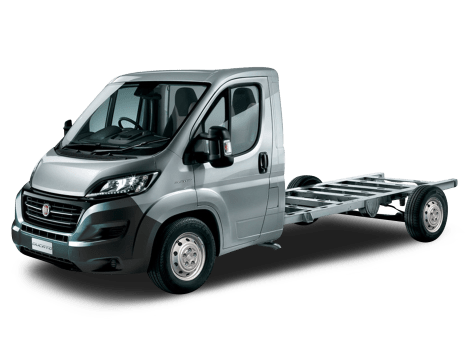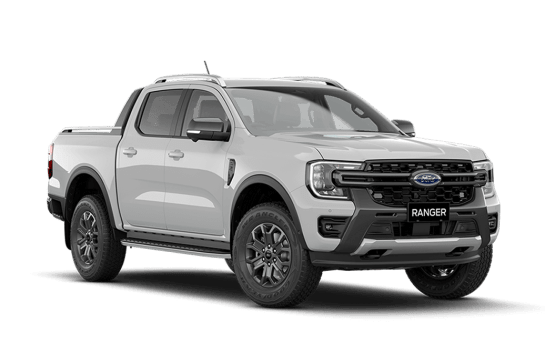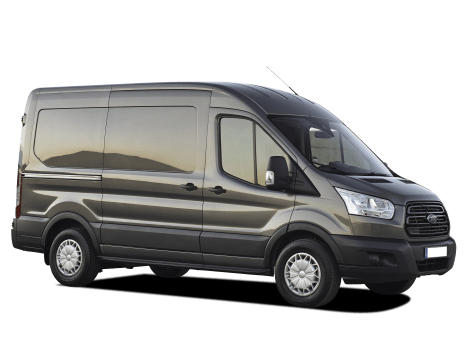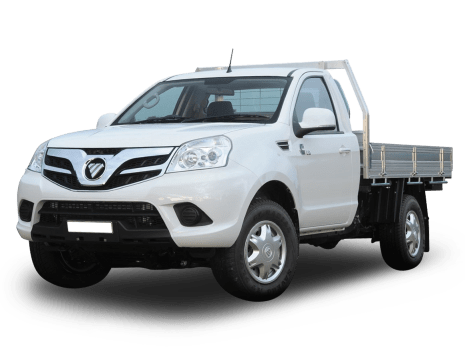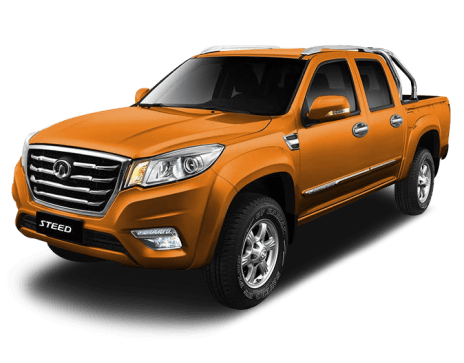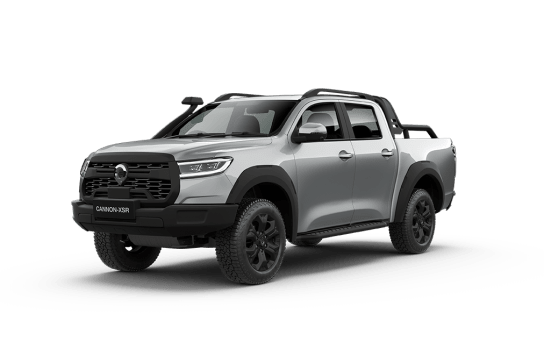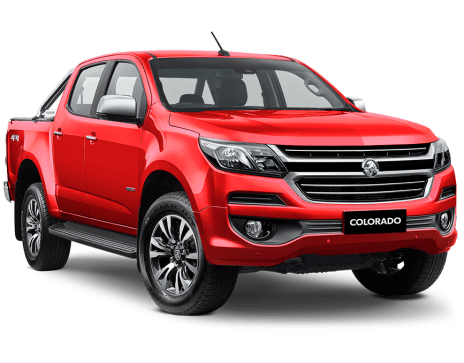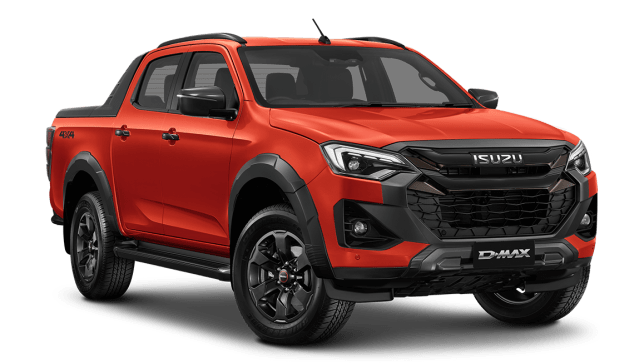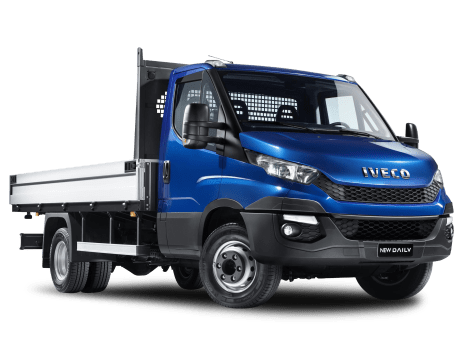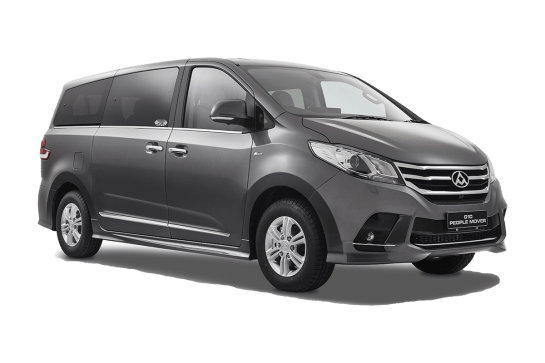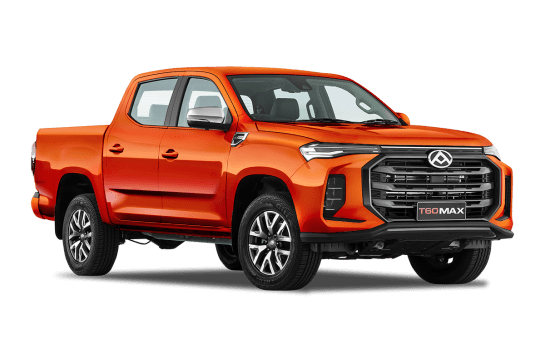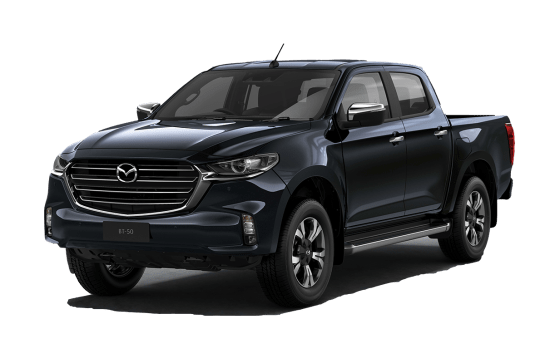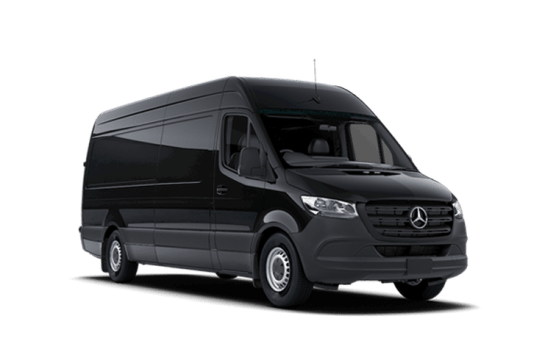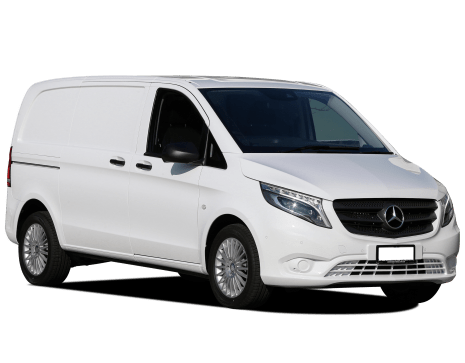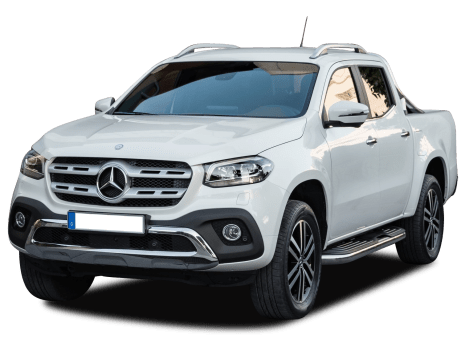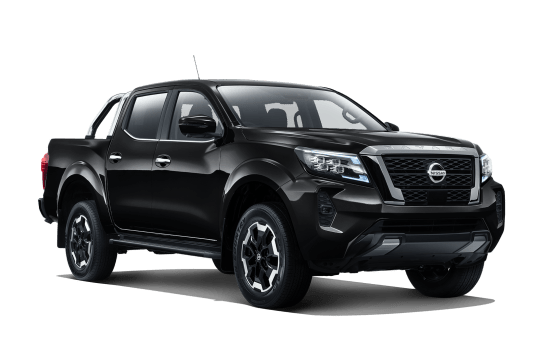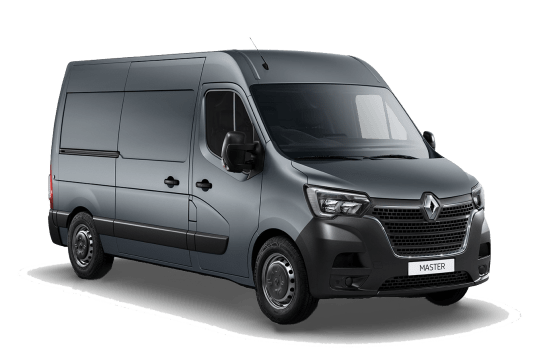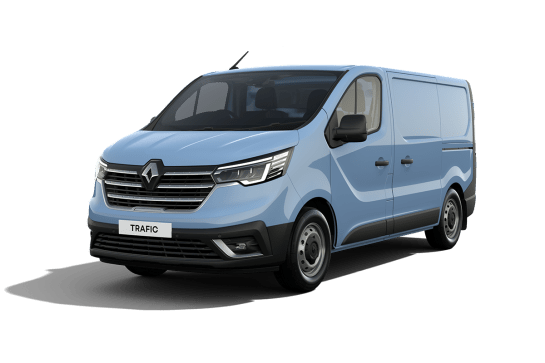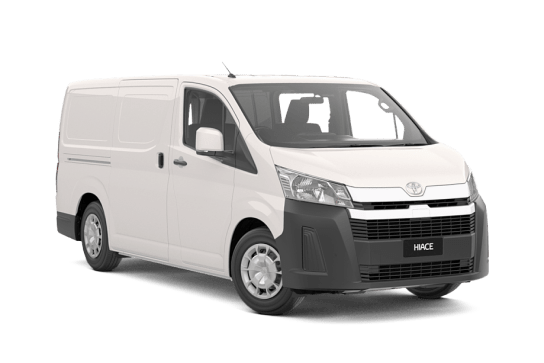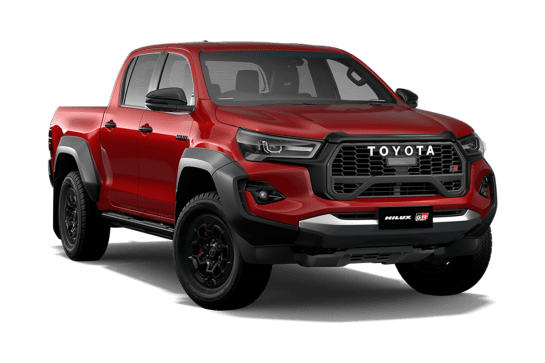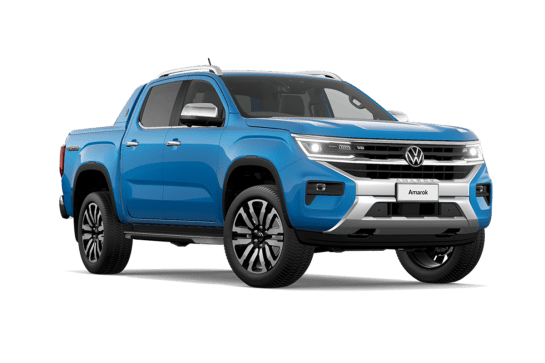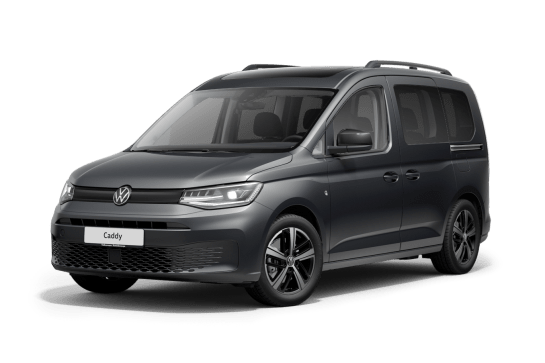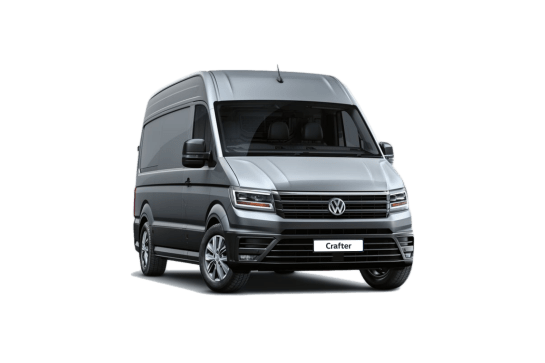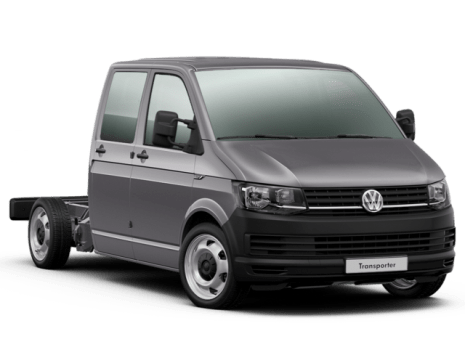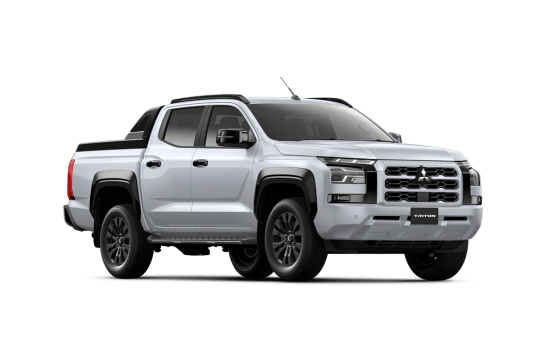
Mitsubishi Triton VS Ford Transit Custom
Mitsubishi Triton
Likes
Dislikes
Ford Transit Custom
Likes
- Practical user-friendly design
- Real-world fuel economy
- GVM/GCM/tow ratings
Dislikes
- No ANCAP rating yet
- Purchase price
- Loose barn-door trim
Summary
Mitsubishi Triton
So, you’re looking for a dual-cab ute. You want something that can do it all. Tough, family friendly, and right in the sweet spot when it comes to price.
You’re also looking for something a little different to Australia’s two favourites, the Ford Ranger and Toyota HiLux. Maybe you find them too expensive, maybe you find them too popular, or maybe you find the HiLux too old and the Ranger too digital.
For this test, we’ve grabbed the next two down in terms of popularity. Both are built by Japanese automakers in Thailand, and both have a reputation for being as tough as they come.
Read more about
- Beefed-up ute approved for Australia: Isuzu D-Max Blade gets Walkinshaw treatment to take on the Toyota HiLux GR Sport, Nissan Navara Warrior and maybe even Ford Ranger Raptor
- Iconic badges to return? Mitsubishi Lancer and Montero nameplates trademarked in the US suggest Nissan Patrol twinned Pajero and Nissan Leaf relation are coming
- Will the new 2025 Kia Tasman ute be a hit? We examine whether newcomers such as the BYD Shark plug-in hybrid ute can match the might of the Ford Ranger and Toyota HiLux | Analysis
On the one hand, we’ve got the new-generation Mitsubishi Triton in GLS form, and on the other, we’ve got the facelifted Isuzu D-Max in LS-U+ form. Both are well-equipped dual-cabs in 4x4 form which sit second from the top of their respective ranges.
Will we be able to crown one a winner for work, play, and family duties? Read on to find out.
| Safety rating | |
|---|---|
| Engine Type | 3.0L turbo |
| Fuel Type | Diesel |
| Fuel Efficiency | 8L/100km |
| Seating | 5 seats |
Ford Transit Custom
Those looking to buy a mid-sized (2.5 to 3.5-tonne GVM) commercial van are spoilt for choice, as there are currently 11 models from nine manufacturers competing for your business.
Latest VFACTS industry figures show that Toyota’s HiAce continues to dominate this segment with a staggering 46 per cent share of sales, well ahead of Hyundai’s Staria Load, LDV’s G10 and Ford’s Transit Custom in a close three-way fight for second place.
Chasing a larger slice of this pie chart, Ford has launched its all-new Transit Custom range which in Australia is the first new generation of Transit Custom in a decade.
Read more about
- Record breaking Ranger! How the Ford Ranger has achieved classic-era Holden Commodore and Ford Falcon popularity, with help from Toyota Prado
- Ford's electric car breakthrough: 2025 Ford Mustang Mach-E sets new world record to beat rivals such as the Tesla Model Y, Hyundai Ioniq 5 and Kia EV6
- Walkinshaw's new... Ford?? Former Holden tuner reveals limited-edition Ford Ranger ute with off-road tuning to rival the Toyota HiLux and Isuzu D-Max
Ford claims it’s globally popular one-tonner has been redesigned from the ground up, so we recently spent a week aboard to see from a tradie's perspective if it has what it takes to put a larger dent in HiAce sales.
| Safety rating | — |
|---|---|
| Engine Type | 2.0L turbo |
| Fuel Type | Diesel |
| Fuel Efficiency | 7.6L/100km |
| Seating | 3 seats |
Verdict
Mitsubishi Triton/10
It’s a tough test for two tough utes, which are more evenly matched than we first expected. It’s clear both also make great alternatives to the HiLux or Ranger.
The Triton’s asking price is more affordable. It has solid ownership terms as well as a sleek, modern, and spacious cabin. It also has a higher payload and a handful of additional safety kit. On value (and our scoring system) alone, it’s hard not to award it the win.
However, this doesn’t make the D-Max a loser by any stretch. It impressed in areas I didn’t expect. Its cabin is more comfortable even though it doesn’t feel as big. It boasts a better ride quality and faster, smoother power delivery when compared to the Triton. After our rigorous testing, it was the ute I subjectively preferred driving home in at the end of the day.
| Triton GLS 4x4 | D-Max LS-U+ 4x4 |
Price and specs | 8 | 7 |
Practicality | 8 | 7 |
Design | 8 | 7 |
Engine and transmission | 7 | 8 |
Fuel consumption | 7 | 7 |
Driving | 7 | 8 |
Safety | 9 | 8 |
Ownership | 9 | 8 |
Final score | 7.9 | 7.5 |
Ford Transit Custom8.1/10
Although yet to be ANCAP-rated, the latest Transit Custom LWB offers numerous design features unmatched by the dominant HiAce LWB, along with higher load volume/payload/tow ratings and less frequent servicing. However, those attributes come at a much higher price than its Toyota rival, so only a potential buyer can decide if they’re worth the extra spend.
Design
Mitsubishi Triton
Both versions of these utes arrived this year, one a new-generation, the other a facelift.
We’re straying into subjective territory as always with design, but to me the Triton gets an advantage. Clearly its latest generation has been cause for a blank canvas redesign, and the result is a much more contemporary looking vehicle from the outside.
Its light profile, imposing width and wheel stance, as well as its tidy body panels make it stand out from the crowd, particularly at its price point. Sure, it doesn’t have the brash American appeal of the Ranger, but it looks more modern than the facelifted D-Max on this test at any rate.
On the inside it continues its modern look and feel, and also features plenty of clever little design touches to push Mitsubishi’s diamond theme. This is reflected in surprising places, like the knurling on the volume dial or reflected in the headrests of the seats. The cabin feels spacious and wide, and is brightened up a bit with a tasteful smatter of silver in the cool bar-style vents. It also features bright and sharp screens with decent if uninspired software.
Meanwhile the D-Max stays the course for this update with a slightly more aggressive treatment in its grille and rear light clusters. Its overall visage is one of a conservative ute which plays it quite safe in terms of design queues. It does keep with the tough reputation of the D-Max badge, but in my opinion runs the risk of feeling a little dated with so many newer-looking options on the market, ranging from its Triton rival here to the Ranger and VW Amarok.
This tough but rugged theme continues on the inside, with a few redeeming features that may surprise you. On the whole it’s a bit of a greyscale space with plenty of hard plastics, but there are soft-touch surfaces in all the right places which offer a bit more sponge than those in the Triton. It also manages to maintain Isuzu’s current hexagonal design motif, which is reflected in the wheel, buttons, dash cluster and even the seats.
For this update the D-Max also has an improved software suite, although it’s still a bit clumsy in terms of its layout compared to the simple menus in the Triton.
Which seats are better for spending time in? Despite its more rugged appeal, I was surprised to find the D-Max had the better of the two seats simply because you sink into them more. Even the leather trim on its steering wheel is softer and nicer to hold.
Do we have a winner? Despite the D-Max proving to be quite comfortable, in terms of aesthetics and providing a modern, spacious cabin, it’s the Triton.
Ford Transit Custom
Our Trend LWB test vehicle has a 3500mm wheelbase and 5450mm overall length, with both dimensions being 400mm longer than its SWB sibling. Its 1980mm height ensures access to height-restricted areas like multi-storey carparks and underground loading bays.
The new front-wheel-drive chassis platform retains simple and rugged MacPherson struts up front, but there’s a new coil-spring independent rear suspension (IRS) replacing the previous leaf-spring/beam axle for improved ride comfort and handling. Steering is rack and pinion and there’s a quartet of disc brakes.
Its new cargo bay design has a lower floor and new access step for improved ease of loading and unloading. The front wheels and strut towers have also been moved further forward, resulting in a shorter front body overhang to assist when parking and manoeuvring in confined spaces.
This front suspension relocation has also improved cabin floor space and foot rests for occupants, in a user-friendly cabin that allows a driver to easily enter and exit the vehicle from both sides. This ‘walk-through’ function is enabled by a flat floor combined with a flush-fitting electronic parking brake button and column-mounted gearshift stalk to ensure the dash is largely free from protrusions.
The steering wheel is noticeably square in shape, which offers two benefits. The squared-off bottom half optimises space for the driver’s torso, while the top half creates a ‘frame’ around the instrument panel to provide the driver with an unobstructed view.
Our only gripe was a loose plastic moulding that shrouds the wiper motor on the RHS rear barn-door. On numerous occasions, after clicking it back in place, it would become dislodged when closing the doors and tumble into the cargo bay. It could have been a manufacturing fault unique to our test vehicle, but not something we've previously experienced in Transit Customs.
Practicality
Mitsubishi Triton
Dimensionally, the Triton is longer and taller but slightly narrower than the D-Max (although, it does not feel it), while the D-Max actually gets a longer but much narrower tray. See the full dimensions in our table below.
In terms of storage and adjustability in the cab these two are quite evenly matched. Both offer eight-way power adjust seats in the spec tested, and both offer telescopic adjust for the steering column. Both get large bottle holders in the doors and in the centre console, although without adjustable ridges, neither are perfect when it comes to holding different sized bottles.
Only the Triton scores a wireless charging bay below its climate controls, while it also offers a larger centre console box.
Both have easily adjustable screens with the new-generation Triton committing nicely to dials for tuning and volume, and the D-Max notably re-introducing them for this update. Again, the Triton’s software is more simply laid out, and its screens are brighter and sharper than the units in the D-Max.
Both cars score an array of easy-access toggles on a dedicated climate panel, saving you the need to negotiate with touchscreen menus, so they’re evenly matched on that front.
The rear seat is differentiated mainly by the additional width seemingly on offer in the Triton, which feels as though it could seat an adult in the middle position in relative comfort. It scores bottle holders in the doors and drop-down armrest, as well as two USB-A ports on the back of the centre console and adjustable air vents in the roof. Additionally, the Triton gets a clever set of pockets on the back of the passenger seat suited to various device sizes. I fit quite comfortably behind my own 182cm tall driving position in the Triton, although I did feel as though I was seated very far off the ground.
Meanwhile the D-Max’s rear seat offers the same spongy seat trim as in the front seats, although overall it feels narrower than the Triton. It, too, scores bottle holders in the doors and two additional small ones in the drop-down armrest, although it only offers a single USB-C outlet on the back of the centre console. There are also two adjustable air vents down there. And an odd little storage tray. Unlike the Triton, the D-Max comes with a bonus coat hook on the back of the front seat. It feels as though I have slightly less room in the D-Max, but it is still sufficient and just as comfortable.
The Triton has a noticeably larger tray than the D-Max. See the full figures in the table below, but the core part of the story is the Triton’s tray is much wider and offers more useful space between the arches, while the D-Max’ tray turns out to be slightly longer. Both come from the factory in this spec fitted with a plastic tub-liner, but neither come with a roller cover unless you delve into the options list.
Payload is nearly 100kg higher in the Triton compared to the D-Max, although both utes share the same rated towing capacity at 750kg unbraked and 3500kg braked. The Triton gets an alloy spare while the D-Max gets a steel spare.
Off-road prowess was not the focus of this Tradie Guide review, but if you’re curious to see the technical figures, they’re in the spec table below.
Do we have a practicality winner? Seems like the Triton gets ahead here slightly with its higher payload, wider tray, and more spacious-feeling cabin.
| Triton GLS 4x4 | MU-X LS-U+ 4x4 |
L x W x H | 5320mm x 1865mm x 1795mm | 5285mm x 1870mm x 1790mm |
Kerb weight | 2125kg | 2110kg |
Payload | 1075kg | 990kg |
Towing capacity b/ub | 750kg/3500kg | 750kg/3500kg |
Tub capacity L x W x H | 1555mm x 1545mm x 525mm | 1570mm x 1530mm x 490mm |
Tub Width between arches | 1135mm | 1122mm |
Spare | Full-size alloy | Full-size steel |
Tub liner | Y | Y |
Tonneau cover | N | N (ours fitted with a manual roller $3521.76) |
Off-Road
| Triton GLS 4x4 | D-Max LS-U+ 4x4 |
Clearance | 228mm | 240mm |
Approach | 30.4 degrees | 30.5 degrees |
Departure | 22.8 degrees | 19 degrees |
Breakover | 23.4 degrees | 23.8 degrees |
Ford Transit Custom
With its 2016kg minimum kerb weight and 3225kg GVM, the Trend LWB offers a one-tonne-plus payload rating of 1209kg. It also has a big 2500kg braked tow rating and with its generous 5725kg GCM (or how much it can legally carry and tow at the same time) it impressively can tow its maximum trailer weight while hauling its maximum payload.
The cargo bay is accessed via a standard kerbside sliding-door with large 1030mm opening, plus rear barn-doors that open to 180 degrees. Note our test vehicle has the extra-cost option of sliding-doors on both sides (an optional single-lift tailgate is also available).
The LWB load floor is 3002mm long with 1392mm between the rear wheel-housings. So, it can comfortably carry up to two standard Aussie pallets or up to three Euro pallets, held in place by a choice of eight load-anchorage points.
By opening the hatch at the base of the cabin bulkhead, the floor length extends to 3450mm by utilising spare room under the passenger bench seat. This feature is handy for carrying long lengths of timber, electrical conduit, copper/PVC pipe, rolls of carpet etc.
Its 6.8 cubic metres of load volume is larger than the HiAce LWB’s 6.2 and the cargo bay comes standard with Ford’s ‘Load Area Protection Kit’ comprising a moulded floor-liner plus side and rear door protection. Three internal LED lights provide brilliant illumination in low-light conditions.
Although not fitted to our test vehicle, all MY24.5 models come equipped with Ford’s clever integrated roof-rack system, comprising a trio of hinged racks which lie flat when not in use but can be easily raised and locked into vertical positions. This sturdy design can carry up to 155kg when shared across the three racks.
There’s generous cabin storage too, with each front door offering three tiers of storage with the largest central tier comprising a large-bottle holder and bin.
There’s also small-bottle/cup-holders at each end of the dash and a fold-out small-bottle/cup-holder for the driver lower down, plus a glovebox and on top of the dash two cavernous compartments which negate the need for an overhead shelf.
The centre seat’s backrest folds flat to reveal a small work desk and the bench seat’s hinged base-cushions can tilt forward into a vertical position to access a large hidden storage area beneath. This vast space also serves as the cargo bay’s load-floor extension when carrying long items.
Price and features
Mitsubishi Triton
First up, let’s talk price-tags. Usually, if you want all the luxuries without spending too much, this second-from-the-top variant is where it’s at, and our two competitors here are very closely matched.
Straight away, the Mitsubishi Triton GLS appears to get a clear advantage. At $59,090 before on-roads, it’s nearly $6000 more affordable than than its D-Max LS-U+ rival here, although to make it match spec-for-spec, you need to add $1580 to its price-tag for the Deluxe Pack which adds things like leather seat trim, heating, and power adjust for the driver.
Meanwhile, the D-Max LS-U+ needs no extras added, but is significantly more expensive, starting at $65,500. Our test example also had a manual roller cover fitted, which adds a further $3521.76 to the price, but doesn’t affect the outcome here as the Triton doesn’t get one as standard anyway.
Both of our utes here score 18-inch alloy wheels clad in highway terrain tyres (on the spec sheet, our test Triton had all-terrains for some reason), LED headlights, 9.0-inch multimedia touchscreens, 7.0-inch digital instrument elements, keyless entry with push-start, dual-zone climate, and side-steps.
Both get wireless Apple CarPlay connectivity, but only the D-Max gets wireless Android Auto (it’s wired in the Triton), however, the Triton hits back with its wireless phone charger which is missing from the D-Max. The D-Max also gets auto walk-away locking, but misses out on the auto folding mirrors the Triton gets. Technically, the D-Max has more speakers, but the Triton’s audio system sounded better.
Check out the table below for the full specs laid out neat and tidy.
In terms of which one is a winner here? They’re such a close match it’s too close to call on features alone, but the Triton’s price advantage, even with the Deluxe Pack, is hard to ignore.
| Triton GLS 4x4 (Deluxe Pack) | D-Max LS-U+ 4x4 |
Price (MSRP) | $59,090 (+1580) | $65,500 |
Wheel size | 18-inch alloy | 18-inch alloy |
Tyre | Maxxis A/T | Bridgestone H/T |
LED headlights | Y | Y |
Multimedia screen | 9.0 inches | 9.0-inches |
Apple CarPlay/Android Auto | Wireless CarPlay, wired Android Auto | Wireless CarPlay and Android auto |
Wireless phone charger | Y | N |
Digital dash | No (7.0-inch info display) | Partial (7.0-inch centre) |
Seat trim | Leather (Deluxe Pack) | Leather |
Speakers | 6 | 8 |
Climate | Dual-zone | Dual-zone |
Power adjust | Driver (8-way - Deluxe Pack) | Driver (8-way) |
Heated seats | Front (Deluxe Pack) | Front |
Connectivity 1st row | USB-C, USB-A, 12v | 2x USB-C, 1x USB-A (Dashcam), 12v |
Connectivity 2nd row | 2x USB-A | 1 x USB-C |
Rear air vents | Y (roof) | Y (console) |
Keyless entry and push-start | Y | Y |
Sidesteps | Y | Y |
Auto walk-away lock | N | Y |
Auto-folding wing mirrors | Y | N |
Built | Thailand | Thailand |
Ford Transit Custom
The new Transit Custom range consists of four models, comprising the work-focused Trend in a choice of short wheelbase (SWB) or long wheelbase (LWB) plus the more lifestyle-oriented Sport SWB and Sport Double-Cab LWB.
Our test vehicle is the Trend LWB, which like all variants is available only with Ford’s latest 2.0-litre TDCi EcoBlue four-cylinder turbo-diesel and eight-speed automatic for a list price of $57,590. That's considerably higher than rivals including the Toyota HiAce LWB Barn Door ($51,636), Hyundai Staria Load Barn Door ($46,740) and LDV G10+ Barn Door ($39,537).
It comes standard with Frozen White paint, 16-inch steel wheels with replaceable plastic covers and 215/65R16C tyres with a full-size steel spare.
There's fabric-trimmed seating for three comprising an eight-way manually adjustable driver’s seat, with lumbar support and fold-down inboard armrest, plus a two-passenger bench seat. The two outer seating positions are also heated.
The cabin is separated from the cargo bay by a metal bulkhead which doubles as a cargo barrier, equipped with a central window and load-through hatch (see Practicality). Plus there’s keyless start, USB-A/USB-C ports and a 12-volt socket, Sensico (synthetic leather) steering wheel with ample height/reach adjustment and more.
The dash offers a big 12-inch screen with 7.0-inch colour digital instrument cluster for the driver, plus a 13-inch multi-function colour touchscreen display which controls some vehicle settings and the four-speaker SYNC 4 multimedia system with digital radio, Bluetooth and wireless Apple CarPlay and Android Auto compatibility.
There’s also wireless phone charging, sat-nav and, for the first time in a Ford vehicle in Australia, an embedded 5G modem to optimise connectivity.
Under the bonnet
Mitsubishi Triton
Our utes again seem quite evenly matched. Both have diesel engines, both have a six-speed automatic transmission, both have 4x4 capability with low-range transfer cases, and both have locking rear differentials. One, however, comes out on top when it comes to pure numbers.
The Triton uses an upgraded version of the engine used in the previous-generation truck. It still measures 2.4-litres of capacity across four cylinders, but is now twin-turbocharged. Total power comes to 150kW/470Nm and peak torque arrives from 1500rpm.
Meanwhile, the D-Max continues to employ its renowned 3.0-litre four-cylinder single-turbo engine from the brand’s light-duty commercial range, producing a sturdy 140kW/450Nm. Peak torque arrives from 1600rpm.
A winner? The Triton’s additional power is backed by a higher payload, so we’re inclined to hand the win to it, although there’s more to the story in the driving and load test section of this review.
| Triton GLS 4x4 | D-Max LS-U+ 4x4 |
Capacity | 2442cc | 2999cc |
Cylinders | 4 | 4 |
Turbo | Twin | Single |
Power | 150kW | 140kW |
Torque | 470Nm | 450Nm |
Transmission | Six-speed | Six-speed |
Diff locks | Rear | Rear |
Ford Transit Custom
Ford’s latest TDCi EcoBlue 2.0-litre four-cylinder turbo-diesel with AdBlue produces the same 125kW at 3500rpm as its predecessor. It also matches the previous model’s 390Nm of torque, but it's served across a wider torque band between 1750-2500rpm which is also higher in the rpm range.
The new eight-speed torque converter automatic (previously six-speed) is smooth and refined, offering the choice of sequential manual-shifting via a rotating knob on the column-mounted gearshift stalk. There are also four selectable drive modes comprising Normal, Eco, Slippery and Tow/Haul.
Efficiency
Mitsubishi Triton
We ran a distance-controlled fuel test on both vehicles in the kinds of conditions we reckon tradies will drive them in. This included about 65km straight through the middle of Sydney on expressways and high-traffic urban roads, then about 55km as part of a return journey on the freeway.
The results were interesting because both vehicles were very close but used less fuel than the official claim, check the table below for details.
Both can claim nearly 1000km on the official consumption numbers, and neither is a hero when it comes to carbon emissions - check the figures out in the table below. Only the Triton requires AdBlue which will occasionally need to be topped up.
| Triton GLS 4x4 | D-Max LS-U+ 4x4 |
Diesel consumption (official/combined) | 7.7L/100km | 8.0L/100km |
Diesel consumption (on-test) | 7.9L/100km | 7.8L/100km |
Fuel tank | 75L | 76L |
Est. driving range | 974km | 950km |
C02 | 203g/km | 207g/km |
AdBlue | Y | N |
Ford Transit Custom
Ford claims an official combined average of 8.0L/100km and the dash display was claiming a close 8.9 at the completion of our 273km test.
This was mostly unladen city and suburban driving, plus hauling a near-maximum payload on a mix of highways and backroads. The engine’s Auto Stop/Start feature remained on for the duration of our test.
Our own figure, calculated from fuel bowser and tripmeter readings, was higher again at 9.2 which is still excellent single-digit economy for a van weighing more than two tonnes in real-world use. Therefore, based on our figure, you could expect a realistic driving range of around 760km from its 70-litre tank.
Driving
Mitsubishi Triton
Both utes on this test provide a very competent and nearly SUV-like experience, and while you can do even better in this segment with the likes of the Ford Ranger or Volkswagen Amarok, these two are very evenly matched. Still, there are some subtleties that may affect your choice.
Triton unladen driving
Starting with the Triton, and straight away you notice its excellent visibility and commanding driving position. The modern feel for the cabin is reflected in the driving experience thanks to a tidy layout, easy operation of screens and dials, and relatively straightforward software.
The steering is notably heavier in the Triton and it takes more effort to drive over longer periods of time, as a result it can be more fatiguing. It does lend itself to plenty of feel in the corners and on uneven terrain, however.
The ride is also firmer in the Triton. It can deal with undulations and larger bumps quite well, but smaller, sharper road imperfections were communicated to the cabin. On the other hand, the cabin feels overall more refined, with not as much road and engine noise making its way inside. The wider track on this new-generation version offered plenty of stability and confidence in the corners.
When it comes to deploying power the Triton certainly feels as strong as a dual-cab should, although a slight moment of additional lag required to actually get the power to the wheels was notable, even though technically peak torque arrives at lower rpm in the Triton. It leaves a feeling of the Triton needing to work harder than its rival despite its higher outputs on paper.
While the six-speed auto was also mostly as smooth as it should be, it can get caught off guard and take a moment to change up or down.
The safety systems in the Triton are reasonably well tuned. The example we tested scored a software update Mitsubishi deployed to address issues it had from the launch with an over-active driver monitoring suite. The result is good, with the system being mostly hands off. The tech was a bit confused by the use of sunglasses, however.
Its lane keep software was also more aggressive than the system in the D-Max on the rare occasion it intervened. These kinds of issues are quite common on modern SUVs and passenger vehicles, and as a symptom of being one of the first utes to fully deploy them, the Triton’s systems are a little imperfect.
On the whole we like the Triton. It’s a very modern drive experience, although it was interesting to find some parts aren't as smooth or seamless as its rival in this test.
D-Max unladen driving
The D-Max feels a bit more closed in than its Triton rival here in the cabin, with loads of dark trim and slightly more limited visibility out the rear compared to the Triton. It does have massive wing mirrors which offer a wide view of neighbouring lanes.
Somewhat frustratingly, the screens (both in the dash and multimedia screen) appear more dull than the ones in the Triton and more susceptible to glare. The software is better than the pre-facelift model and it’s faster, but still a bit clumsily laid out.
The D-Max starts to impress as soon as you set off, however. Its steering is much lighter than the Triton, but manages to maintain enough feel in the corners to imbue the driver with confidence.
The ride is also excellent. It’s comfortable and compliant over most bumps and imperfections, while maintains control without being bouncy. It has an element of the ladder chassis jiggle common among ladder frame vehicles, but hides it well.
The D-Max’ 4JJ3 3.0-litre engine is renowned for being simple and powerful, and this is especially clear when compared to its technically more powerful rival.
It feels as though the power is delivered more quickly and more smoothly than the Triton. The six-speed unit in the D-Max is slick and straightforward and seemingly never caught off-guard. Perhaps the only area where the D-Max trails the Triton in this respect is the amount of noise the physically larger engine generates. Cabin ambiance isn’t quite as nice in the D-Max generally.
Safety systems are also seemingly better tuned. Not a single safety system interfered with the drive experience in our entire time with the D-Max, which speaks well to those who like to be in full control.
To sum the D-Max up, it does almost everything when it comes to driving slightly better than the Triton. On top of this, its light steering and softer seats will leave you less fatigued at the end of the day.
Load test
While we didn’t take our utes off-road for this review, we did load their trays up to see how they would handle work duties. Our new friends at BC Sands in Sydney’s Taren Point helped us out by lending us 500kg of firewood and some of their expert forklift operators to make this test possible, check them out here.
In total we had 500kg of firewood in the tray and two occupants in the cab for about 660kg on board of both vehicles. From there we took them on the same 13km loop which involved roundabouts, T-junctions, speed bumps, downhill and uphill stints as well as a brief jaunt on a multi-lane expressway.
First we loaded up the D-Max. Its narrower tray made it harder for the forklift operator to drop the bag of wood in, and once loaded its suspension compressed a significant amount.
The edges of its tray proved useful for mounting ratchet straps, although it is notable how limiting the smaller distance between the wheel arches is and the amount of space the manual roller cover takes up. Our total 660kg load is about two-thirds of the D-Max’ total permissible 990kg.
With the weight in the tray, the D-Max was initially unsettling, but confidence grew. This is because its big engine barely feels the additional weight and the suspension is capable enough to handle the mass despite the initial compression. While the softness feels like it requires caution in the corners, it handles additional compression from speed bumps, road imperfections and hills in its stride, with no secondary bouncing and a good amount of remaining ride comfort. The steering feels only slightly heavier with the additional weight.
After our short stint, the D-Max consumed 11.9L/100km according to its computer, which is reasonable.
Next up, we loaded the Triton. Its firmer springs did not compress as much as the D-Max, and the additional width in its tray made it significantly easier for the forklift operator to drop the bag of firewood in the tray.
The Triton seems more confident in its footing initially, with less compression and the additional track width making it feel as though it would be better than the D-Max. However, things changed as we drove it.
The Triton’s engine also barely feels the additional load, but does need to rev a smidge more. The transmission mostly copes well, although the odd occasion where it's caught out for a moment when changing up or down is more noticeable. The steering, which was already firm, remains unchanged.
The biggest issue the Triton faces is its suspension. With the additional load over the rear axle, large bumps cause a pogo effect with two or three secondary bounces after the initial compression. This particularly gnarly trait is what set it apart from the comparatively smoother D-Max.
The Triton claimed to use slightly less fuel than the D-Max under load on our short route, at 11.1L/100km.
Ford Transit Custom
The large front doors open wide for easy access. Multiple seat adjustments combined with a fold-down inboard armrest, ample choice of steering wheel height/reach and a large left footrest ensure a comfortable driving position.
The thick-rimmed steering wheel has a quality feel and there’s clear eyelines to the big door mirrors, in which the lower third of each offers a wide-angle view. This is most appreciated on the LHS given the van’s solid walls and resulting huge blind-spot, with safety enhanced by blind-spot monitoring and cross-traffic alert.
It has brisk acceleration from standing starts, with the eight-speed automatic smoothly upshifting at 2500rpm in each gear to keep the engine operating in its peak torque zone. This ensures zippy performance in city and suburban driving, plus optimum efficiency at highway speeds.
Unladen ride quality and handling are enhanced by the new IRS, although the difference is not as noticeable as you might expect given how well Ford refined the previous leaf-spring/beam axle arrangement.
To test its payload rating we forklifted 975kg into the cargo bay, which combined with our crew of two equalled a total payload of 1155kg that was only 54kg less than its legal limit.
The coil-spring IRS compressed about 60mm under this load, which ensured long cone-shaped jounce rubbers attached to the underfloor engaged with the suspension arms to provided a second stage of load support. This also avoided any harsh bottoming-out over larger bumps on our test route.
Its competent drivetrain also made light work of our 13 per cent gradient, 2.0km-long set climb at 60km/h, with the eight-speed auto self-shifting down to fifth gear and maximum torque at 2500rpm to easily haul this load to the summit.
Engine braking on the way down was also commendable, given its modest 2.0-litre displacement and the big payload it was trying to restrain, with only one solid brake application required to avoid exceeding the speed limit or reaching its 5000rpm redline on overrun.
Safety
Mitsubishi Triton
Safety equipment is impressive on both utes, which come with near-passenger car levels of active equipment.
Both score the now essential auto emergency braking, lane keep assist, and blind spot monitoring, as well as adaptive cruise control and driver monitoring, however, only the Triton comes with active driver monitoring as standard, and front cross-traffic alert as a no-cost option.
It is worth noting the lane keep software and the driver monitoring equipment in the Triton is significantly more sensitive than the equivalent technologies in the D-Max, and more annoying as a result.
Our Triton has the latest software update designed to abate the driver monitoring issues it had at launch, and while they are mostly addressed, the system still gets confused by sunglasses.
Both cars score reversing cameras and both have an impressive array of eight airbags.
The D-Max is covered by the maximum five-star ANCAP safety rating secured by the pre-facelift model in 2022, while the new-generation Triton only recently secured a maximum five-star ANCAP safety rating in 2024.
| Triton GLS 4x4 | D-Max LS-U+ 4x4 |
AEB | Yes | Yes |
LKAS | Yes | Yes |
BSM | Yes | Yes |
RCTA | Yes | Yes |
FCTA | No-cost option | No |
Adaptive cruise | Yes | Yes |
Driver monitoring | Full monitoring | Attention alert |
TSR | Yes | Yes |
TPMS | Yes | Yes |
Reversing camera | Yes, reverse only | Yes, reverse only |
Airbags | 8 | 8 |
ANCAP | Five stars (2024) | Five stars (2022) |
Ford Transit Custom
No ANCAP rating as yet but it offers numerous firsts including a roof-mounted airbag for the passenger which enables the expansive top-of-dash storage. There’s also an exit warning system for the driver, which uses the vehicle’s rear sensors to play an audible alert when an object (such as a bicycle) is approaching while the door is being opened.
The safety menu also includes adaptive cruise control, pre-collision assist with auto emergency braking (AEB) and intersection assist, reverse brake assist, lane-keeping assist, speed sign recognition, parking sensors, tyre pressure monitoring, rear-view camera with 180-degree split-view and lots more.
Ownership
Mitsubishi Triton
Ownership looks like a clear win to the Triton which is offered with a whopping 10-year and 200,000km warranty (conditional on the servicing being completed with Mitsubishi on time during this period.) It also offers a matching ten years of capped-price servicing (see details in the table below) and four years of roadside assist.
On the other hand, the D-Max shouldn’t be written off as it still offers above par ownership terms.
There’s six years and 150,000km of warranty coverage, five years of fixed-price servicing, and its roadside assist can be extended for up to seven years if you continue to service with Isuzu.
Both utes require servicing once every 12 months or 15,000km, whichever occurs first.
| Triton GLS 4x4 | D-Max LS-U+ 4x4 |
Warranty | 10 years/200,000km | Six years/150,000km |
Fixed price servicing | Ten years | Five years |
Annual cost | $489 (5yrs) | $449 |
Service interval | 12 months/15,000km | 12 months/15,000km |
Roadside assist | Four years | Up to seven years |
Ford Transit Custom
The Transit Custom is offered with a five-year/unlimited km warranty. Scheduled service intervals are 12 months/30,000km, whichever occurs first. Capped-price servicing of $499 applies to each of the first four scheduled services across four years/120,000km.



